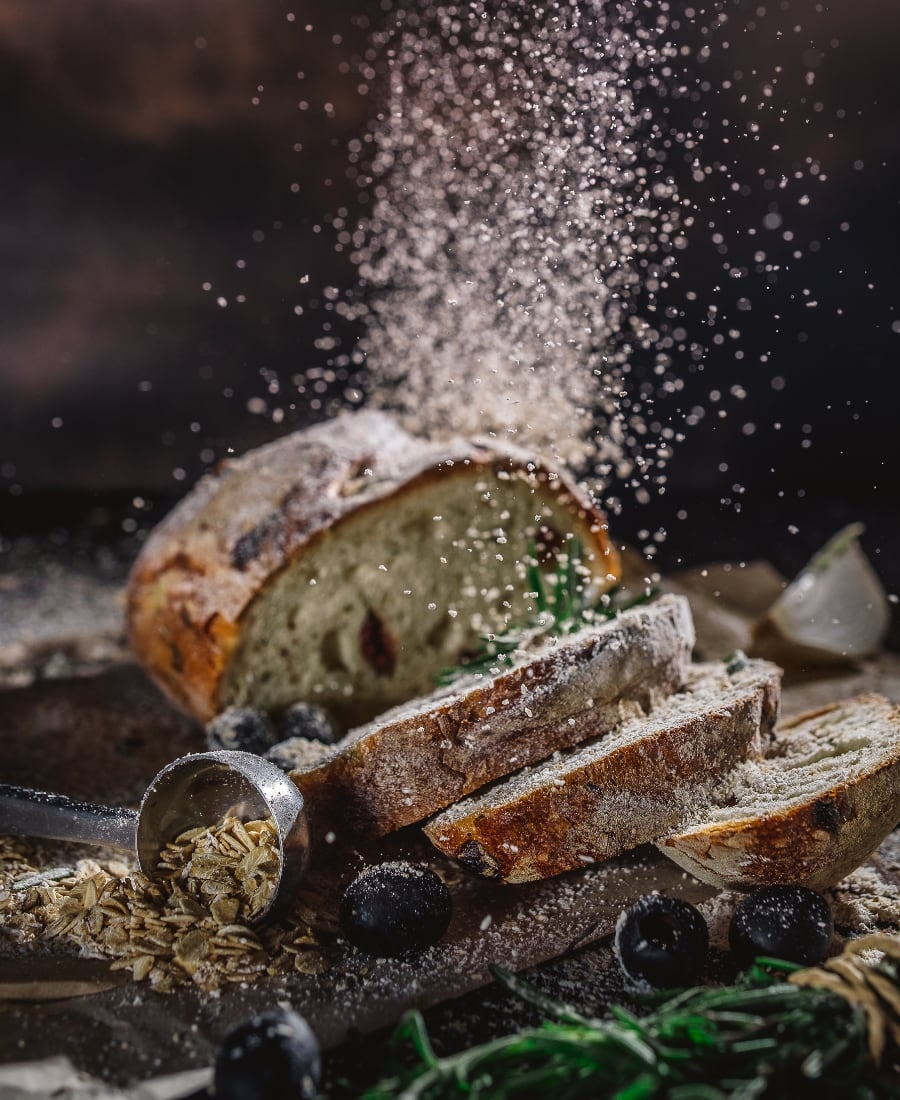If you learned to bake with volume measures (cups, tablespoons, teaspoons, etc.), Baker’s Percentages can be a little daunting, but once you get the hang of using them you will enjoy the convenience and simplicity they bring to your baking.
Let’s walk through what Baker’s Percentages are and how to calculate them so that you too can become adept at using them.
The most important thing to remember about Baker’s Percentages is that the percentages are a percent of the weight of the flour in your recipe, not a percent of total weight of the recipe. This means that the percentages won’t add up to 100%. The percent of flour, though, will always be 100%. Take a look at this recipe for basic sourdough bread:
Flour 433 grams
Water 333 grams
Starter 67 grams
Salt 8 grams
Note that all ingredients are measured by weight, in this case grams, but it could be ounces (weight, not liquid ounces). This means that you will need to put away your cups and tablespoons and get our your scales if you are going to use Baker’s Percentages.
As I said, the Baker’s Percentage for flour is 100% and every other ingredient’s Baker’s Percentage is based on this. Flour is the foundation of the recipe and is therefore the denominator in all calculations. Water, for example, in the sourdough bread recipe above is 333 grams. Thus, the Baker’s Percent for water is calculated by dividing the weight of the water by the weight of the flour—333 grams / 433 grams, which is 77% (rounded to the nearest percent). Similarly, the Baker’s Percentage for starter is 15 % (67/ 433).
Thus, the whole recipe can be stated in Baker’s Percentage like this:
Flour 100%
Water 77%
Starter 15%
Salt 2%
The advantage of this is that you can more easily adjust your recipe. For example, if you decide you want to make three loaves, all you have to do is multiple the flour weight by 3 (433 * 3 = 1,300) and then use the Baker’s Percentages to calculate the weight of the other ingredients.
Flour 1300 grams (433 * 3)
Water 1000 grams (1300 * .77)
Starter 200 grams (1300 * .15)
Salt 24 grams (1300 * .02)
If your recipe has multiple flours, then the base is the total weight of all the flours. If I were to make sourdough bread recipe with 10% whole wheat flour, then the base would be the weight of the all-purpose flour (390 grams) plus the weight of the wheat (43 grams). The total is still 433 grams and this is the basis for the calculation. Thus, the Baker’s Percentages for all the other ingredients remain the same.
A bonus of using Baker’s Percentages is that you use fewer utensils for mixing your recipe. Just set your bowl on your scale and add the ingredients by weight. A recipe that uses a cup and a half of flour and, say a tablespoon of oil and a teaspoon of salt, would require you to wash your cup measurer, your half cup measurer, your tablespoon measure, and your teaspoon measurer in addition to the bowl you are mixing them in. Using Baker’s Percentages, you would use a bowl and a spoon.
Things to remember:
- The total Baker’s Percentage for this recipe is 194%, which is meaningless, there’s no need to calculate it.
- Baker’s Percentages will work if you measure your ingredients in ounces (not fluid ounces) or any other weight measures (if there are any).
- If you have a recipe that has more of another ingredient than it has of flour, the Baker’s Percentage will be greater than 100%.
Note that when bakers talk about hydration, they are typically referring to the Baker’s Percentage for water. The Basic Sourdough recipe above is at 77% hydration.
So, get out your scales and start baking.










1 thought on “Baker’s Percentages explained”
Hi! This is very helpful but I wanted to let you know that the calculation on the salt is not correct – 2% salt would mean that you multiply by .02, not .2. As it’s written, you have 20% salt – more salt than starter!
Thanks for this – really great info!